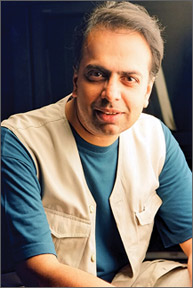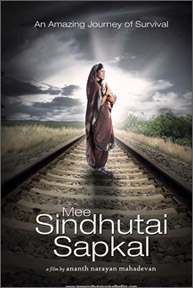|
Film Appreciation with K S Sivakumaran:
Regional Indian films
In India most number of films is produced in Chennai and Mumbai in
that order, but the Bollywood produces mostly films in Hindi language
which is mostly spoken in northern India. But at the same time is widely
enjoyed all over the subcontinent and even by the Diaspora in other
parts of the world. The reasons for this is not far to seek.
 |
|
Ananth
Narayan Mahadevan |
Readers know the obvious answers. Beauty, music, dances, locations,
humour - in fact 'Thamashas' - are presented in cocktail form that is
relished by unassuming and not so literate masses that want 'escapism'
as an outlet for their pent up emotions. But if this is the rule, there
is always an exception.
In the recent past some outstanding films in Hindi has come out from
the Bollywood cinema. Hindi cinema is much more sophisticated than ever
before particularly if such films have an eye on educated, intellectual
and upper middle class audiences.
Hindi films are ever popular in other parts of India and even
powerful enough to cripple the film industries in other parts (regions)
of India. This is just the same as what Hollywood films had done by
encroaching into other parts of the world to cast their influence. Thus
belittling indigenous film production in Europe, Canada, Australia and
other places is the order of the day.
And yet in spite of this regional films in the Indian context and
indigenous films in other parts of the world continue to be produced
where such individual cultures are explored. One could see such films
mainly at the international film festivals periodically in most parts of
the world. One such film festival is held in snowy and extremely cold
Utah State in America.
It's called the Sundance International Film Festival in which trained
and character actor Robert Redford has a tight hold.
Coming back to Indian Regional Films in Bengali, Marathi, Gujarati,
Assamese, Oriya, Punjabi, Kashmiri, Konkani and other languages in the
North and Tamil, Telugu, Kannada and Malayalam films in the South, we
find that we could see some exceptionally good films only at
international film festivals.
Talking about Indian Regional Films I tend to agree with the views of
an Indian film director Ananth Narayan Mahadevan. He is also a writer
and actor.
In an interview with journalist Shambu Shahu of New Delhi (Dilli),
Mahadevan pointed out that "there is more scope for experimentation in
regional cinema. Look at Malayalam, Bengali and now the revived Marathi
cinema. Subjects that are taboo in Hindi find pride of place here.
 And the immense satisfaction it gives to both the filmmaker and
viewer is a result of the conviction of the director who is not bogged
down by too many crooks spoiling his broth." Mahadevan has already made
a mark as a director of poplar films like Dil Vil Pyar Vyar, Dil Maange
More, Aksar and Aggar. And recently he made in Marathi the film called
Mee Sindutai Sapkal. And the immense satisfaction it gives to both the filmmaker and
viewer is a result of the conviction of the director who is not bogged
down by too many crooks spoiling his broth." Mahadevan has already made
a mark as a director of poplar films like Dil Vil Pyar Vyar, Dil Maange
More, Aksar and Aggar. And recently he made in Marathi the film called
Mee Sindutai Sapkal.
But now he says that he is addicted to 'realistic cinema'. Often
regional cinema is eclipsed by the gargantuan hype of Hindi glossies. We
learn that with his last film, Mee Sindutai Sapkal, he has made two
other films in the genre 'realistic cinema.' They were an experimental
film called Staying Alive (reminds me of a collection of translated
Australian Tamil stories) and Red Alert - The War Within. Mahadevan,
apart from being a TV serial director of Hindi Drama, is also an actor,
we understand.
He hopes to make two films one in Malayalam and the other in Hindi. I
liked his epigrammatic statement - "watching films at a Festival is more
fulfilling experience than watching a multimillion glossy that has style
and no substance." Talking of Film Festivals, readers can await a SAARC
Film Festival in Colombo at NFC Cinema Hall between May 11 and 15.
Please note that beginning today three international films are shown at
the ICES (International Centre for Ethnic Studies) at Kinsey Terrace,
Borella.
The films chosen are Ran Rikis' The Lemon Tree, Aparna Sen's The
Japanese Wife (remember we reviewed it on this page sometime back?) and
Sherry Homan's Desert Flower.
These films are shown in connection with the International Women's
Day 2011.
[email protected] |



